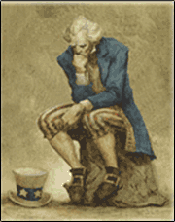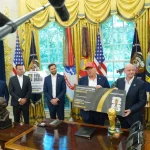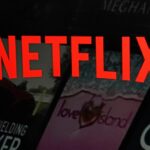
–>
June 29, 2023
Generally speaking, central banks are empowered to control the supply of money by employing a number of tools that include buying government debt, selling government bonds, adjusting reserve requirements, and setting official interest rates. Operating under various legal mandates to sustain an overall healthy economy, central banks ostensibly pursue policies that will produce relatively low inflation, steady economic growth, and low public unemployment.
‘); googletag.cmd.push(function () { googletag.display(‘div-gpt-ad-1609268089992-0’); }); document.write(”); googletag.cmd.push(function() { googletag.pubads().addEventListener(‘slotRenderEnded’, function(event) { if (event.slot.getSlotElementId() == “div-hre-Americanthinker—New-3028”) { googletag.display(“div-hre-Americanthinker—New-3028”); } }); }); }
What if these stated goals are merely talking points meant to justify a central bank’s continued monopoly over a nation’s creation of money, and the true objective of any central bank is to maximize wealth for the wealthiest economic players? Central banks, after all, are usually institutionally independent from government interference. They are private firms managed by the world’s financial elite. How might a central bank pursue a hidden agenda to grow the wealth of its friends at the public’s expense?
The easiest and most effective way would be to create artificial “boom and bust” cycles during which economies greatly expand and then quickly shrink. How does this work in practice? First, a central bank lowers interest rates — the cost of borrowing money — and thereby encourages ordinary citizens to take out loans. These loans are used to buy houses and cars and start small businesses. By artificially lowering interest rates below the natural market rate, central banks stimulate consumer purchases and small business expenditures beyond what Adam Smith’s “invisible hand” would have rendered on its own. Investors who have an economic interest in selling houses, cars, and inventories for small businesses all benefit from the central bank’s intervention.
Additionally, because central banks have encouraged borrowing, they have pumped more money into the greater economy. With the supply of money artificially increased, some individuals are willing to pay more now than before for the same goods or services. Consequently, the prices of goods and services increase, producing inflation. There are two important effects stemming from inflation: (1) a middle-class citizen on a fixed income must now pay more for living expenses, while (2) a higher-class citizen who owns stocks, homes, and other assets will see the currency-denominated value of those assets increase. In other words, inflation acts as a tax on poorer individuals who own little and a supplement for wealthier individuals who own much. While a middle-class citizen living paycheck-to-paycheck will effectively have less income, a higher-class citizen whose principal wealth exists in the form of assets will have increased net wealth. Inflation effects a wealth transfer from the poor to the rich.
‘); googletag.cmd.push(function () { googletag.display(‘div-gpt-ad-1609270365559-0’); }); document.write(”); googletag.cmd.push(function() { googletag.pubads().addEventListener(‘slotRenderEnded’, function(event) { if (event.slot.getSlotElementId() == “div-hre-Americanthinker—New-3035”) { googletag.display(“div-hre-Americanthinker—New-3035”); } }); }); }
Now, a central banker will insist that artificially low interest rates and easy borrowing have made it possible for consumers to own more things and for fledgling entrepreneurs to start small businesses that would have otherwise never existed. A less charitable description would be that low interest rates have induced ordinary citizens to buy things that they cannot afford, take on long-term debt, and risk their financial futures on business start-ups that may well fail. Sometimes those risks pay off and produce rags-to-riches success stories. When interest rates suddenly rise, however, they often end with unpaid bills and the eventual bank seizure of those cars, homes, and business assets. A central bank’s easy money programs momentarily increase consumer ownership and small business creation before inviting financial distress and repossession as rent, payroll, inventory expenses, and other fixed costs increase.
During the “boom” side of the cycle, central banks produce a lot of momentary “winners” and increase overall national wealth by encouraging consumer spending and inflating the currency-denominated value of assets. During the inevitable “bust” side of the cycle, however, the real winners emerge when the super-wealthy scoop up a bankrupt population’s primary assets for pennies on the dollar.
For the globe’s largest corporations, banks, and investment groups capable of quickly transitioning into gold, silver, or other relatively stable mediums for preserving wealth, economic crises are like giant “going out of business” sales, where everything a nation owns “must go,” no matter how low the final sale price. While ordinary consumers lose their life savings and small businesses quickly fold, the über-wealthy who directly or indirectly run central bank policy gobble up housing properties and other assets that have been used as collateral to secure risky loans. Multinational corporations acquire competing mom-and-pop stores for peanuts; banking conglomerates fold local and regional banks into their portfolios; and monster-sized investment groups take controlling interests in an even greater share of a nation’s raw materials, commodities, and publicly traded stocks.
When central banks manipulate interest rates and inflation to create the illusion of real economic growth, some boats float with a rising tide, while other boats sink.
When the dust finally settles, fewer people own more than ever before. Then, invariably, after enough public suffering and business consolidation, the “boom and bust” cycle begins again. Momentary “winners” rise again. Inflationary bubbles expand again. When those bubbles burst, the über-wealthy acquire even more than they did the last time around. The whole process is like the reverse of a snake shedding its skin, wherein central bankers and the financial behemoths behind them add one layer of wealth after the next, until they own everything. By that time, any mouse that happens to get in their way is so scrawny and desperate that he will gladly be eaten or accept the smallest morsel in return for a promise to obey. In this way, central bank snakes see everyone else as either easy prey or a future debt slave.
Why would nations give a bunch of global bankers a monopoly to control the supply of money, when that awesome power allows them to impoverish and manage everyone else? Why would politicians who claim to care about income inequality perpetuate a system that specializes in producing income inequality? The answer is simple: governments are concerned exclusively with power and do not care about preserving democratic ideals, personal freedom, or the livelihoods of their people.
‘); googletag.cmd.push(function () { googletag.display(‘div-gpt-ad-1609268078422-0’); }); document.write(”); googletag.cmd.push(function() { googletag.pubads().addEventListener(‘slotRenderEnded’, function(event) { if (event.slot.getSlotElementId() == “div-hre-Americanthinker—New-3027”) { googletag.display(“div-hre-Americanthinker—New-3027”); } }); }); } if (publir_show_ads) { document.write(“
In front of television cameras, politicians voice commitment to civic virtues. When those cameras turn off, everything they do is transactional. If I do this, what will you do for me?
Central banks permit politicians to supersize their transactional powers in two ways: (1) by buying government debt and increasing the supply of money, they make it possible for governments to spend much more than tax revenues would otherwise permit, and (2) by devaluing currency over time and hollowing out middle-class savings, central banks force citizens to depend more upon government services and benefits for basic needs. In effect, central bank money-printing enables politicians to spend money for votes and influence, as well as to offer welfare and other forms of government assistance to an increasingly impoverished population in exchange for their continued electoral support.
There is no one so obedient as a man who must depend upon another for his survival. If the costs of health care, heating fuel, gasoline, and food are all too expensive after years of steady inflation, then government discretion over who gets what turns politicians into princes.
Conversely, a person free from debts to either financial institutions or government apparatchiks is a person free to chart a life beyond the reach of their coercion. Therefore, those who seek to maximize wealth and power have a perverse incentive to rule over destitute nations.
Call it the road to serfdom. Call it socialism hiding inside the Trojan horse of late-stage capitalism. Call it Marxist globalism intent on creating a small class of masters and several continents of slaves. Whatever it is called, it represents the controlled demolition of entire nation-states. When central banks and politicians work together to fleece ordinary citizens, they create the conditions for despotism, poverty, and…sometimes…revolutions for change.

Image: kolyaeg via Pixabay, Pixabay License.
<!–
–>
<!– if(page_width_onload <= 479) { document.write("
“); googletag.cmd.push(function() { googletag.display(‘div-gpt-ad-1345489840937-4’); }); } –> If you experience technical problems, please write to [email protected]
FOLLOW US ON
<!–
–>
<!– _qoptions={ qacct:”p-9bKF-NgTuSFM6″ }; ![]() –> <!—-> <!– var addthis_share = { email_template: “new_template” } –>
–> <!—-> <!– var addthis_share = { email_template: “new_template” } –>





